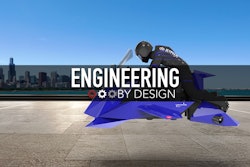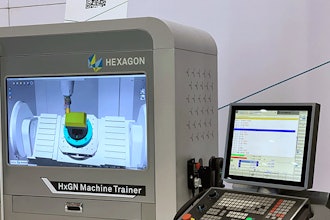Malaysia Tries to Make a Flying Car
Malaysian officials wanted to develop a flying car. It was exciting and the people of the Southeast Asian country were both shocked that it was on the agenda, but also eager to see what they would come up with.
This week, the prototype was unveiled at the 2019 Langkawi International Maritime and Aerospace Exhibition (LIMA 2019).
The result was a collective sigh, as well as some confusion and embarrassment as the prototype looks like someone pulled apart four desk fans and mounted them to a hastily 3D-printed quadcopter.
Beyond the prototype, the disappointment continued when the company admitted that it wasn't a flying car. The vehicle's developers at Aerodyne Group admitted that the concept was actually a point-to-point drone designed to bring people and cargo to pre-planned destinations. It could also serve some surveillance applications and it actually has a slick concept for the interchangeable payload pod.
With four battery-powered motors the concept will reportedly carry up to 440 pounds with a max speed of about 37 mph for 30 to 90 minutes.
No price point has been announced, and the Aerodyne Group said that Vector could be ready to fly as early as June this year.
Birth Control Jewelry
Researchers from the Georgia Institute of Technology are experimenting with new birth control techniques.
A new study applied contraceptive hormones to skin using jewelry. The hormones were applied to the backs of earrings, watches, necklaces and even rings.
Basically, a transdermal patch, like a nicotine patch, is applied to the jewelry, and when it comes in contact with the skin, the hormones are absorbed into the body.
No human testing has been done yet, and while the first application is contraception, the technology could be used for any transdermal drug delivery.
The idea is that adding the drug to something that is already part of a person's daily routine might mean less missed doses, more inconspicuous doses, and in this case, fewer unintended pregnancies.
The prototype showed positive results in initial tests on pigs and hairless rats.
What I like is that using something like an earring back is a universal component that could fit any design. A lot of times we see slick new technology come out in packages that many wouldn't be caught dead wearing.
The technology could also be interesting for elderly patients prone to missing medications. Towards the end, my grandfather never remembered to take his meds, but he'd be damned if you ever saw him without his watch.
Super Monster Wolf Battles Boar
Scarecrows have been used to protect fields for the better part of 3,000 years. While the original designs kept quails out of wheat fields in Egypt, different variations have come along to keep other pests at bay.
The latest, particularly terrifying iteration is the Super Monster Wolf. At first you think the name is over the top, and then you look into the glowing eyes of this demon and realize that it is pretty accurate.
The solar-powered Super Monster Wolf was developed in part by researchers at Hokkaido University and Tokyo University of Agriculture to blast 48 different tones to keep wild boars from damaging crops.
The 90 decibel screeches can be heard for up to 1 km2, and the idea is that with 48 different screeches, the boars won’t get used to the cries.
So far, the wolf has been a success. According to the local agricultural association, wild boars have been non-existent for more than a month since the wolves were installed.
The robots are covered with realistic-looking fur and include flashing LED eyes that are set off by an infrared sensor. It also shakes its neck to make it look more aggressive while protecting the rice and chestnut crops in the paddy fields.
Next, the robot wolf is headed into mass production, with an expected cost around $4,840. Once that price comes down, might have a future in home security, or at least the fall holiday season.
This is Engineering By Design.






















